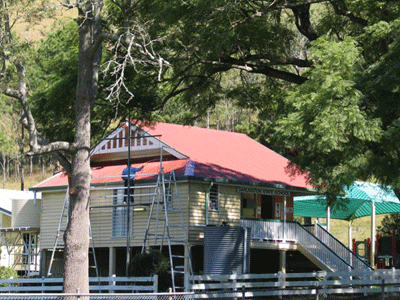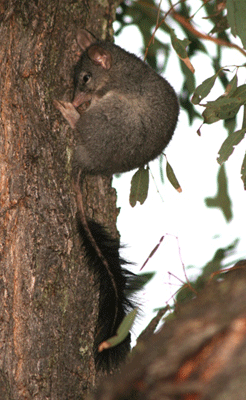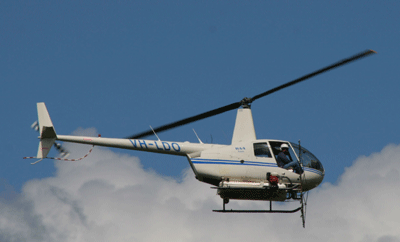
Logan and Albert Conservation Association

Mary River was home to a number of rare and endangered species, including the well known Mary River cod and turtle and the Queensland lungfish. There were also a couple of smaller fish regarded as rare or endangered. There used to be nine species of lungfish in Australia, but all of them are now extinct except for the Queensland lungfish. This was part of the interview with Professor Angela Arthington Professor of Environmental Science at Griffith University and a research member of the Australian Rivers Institute, Angela Arthington during ABC Radio's rural program, Bush Telegraph.
Pro and anti-dam advocates of the Traveston Crossing dam issue were interviewed on Bush Telegraph this week.Reporter Greg Muller interviewed six people, five warning of dangers and one - dam construction company boss Graeme Newton saying all is well with the project. Read The Gympie Times coverage here .
A huge range of titles are available both on line and via bookshops and libraries. The catalogue or list is available here. Web specials, downloads, online ordering etc are available. This is also a useful tool to find new titles to request at your Council library. Some older resources are free eg from 2001 Resetting the Compass Australia's Journey Towards Sustainability. This work was highly was highly regarded. eg “This is a timely and important book which should be at least on your bookshelf, if not on your desk or even your shoulder-holster! ... The span of the book is truly impressive, and the language is always clear and compelling.” Ian Lowe, Griffith University, Brisbane (Australian Journal of Environmental Management v.8 no.3 September 2001)
In view of the hazardous outcomes of recent aerial spraying in Kerry Valley Scenic Rim these two older resources could be useful - Review of Agricultural Chemical Spray Drift and Spray Drift Management - both available as free downloads.
If you do read any of these titles and would like to submit a review please send it to ecoinfo[at]laca.org.au.
On my wish to read list are the following titles -
Native Mice and Rats written by Bill Breed and Fred Ford
Australia’s native rodents are the most ecologically diverse family of Australian mammals. There are about 60 living species – all within the subfamily Murinae – representing around 25 per cent of all species of Australian mammals. They range in size from the very small delicate mouse to the highly specialised, arid-adapted hopping mouse, the large tree rat and the carnivorous water rat. Native Mice and Rats describes the evolution and ecology of this much-neglected group of animals. It details the diversity of their reproductive biology, their dietary adaptations and social behaviour. The book also includes information on rodent parasites and diseases, and concludes by outlining the changes in distribution of the various species since the arrival of Europeans as well as current conservation programs.
Good Gardens with Less Water - companion to Kevin Handreck’s best-selling Gardening Down-Under
It is possible to have a great garden anywhere in Australia, even under the toughest water restrictions. Good Gardens with Less Water will show you how. This new book is a practical guide to gardening with limited water.
The full report is available here. This report has many implications for what we as a community do and each can do.
Experts warn that many Australian mammals are in danger of suffering the same fate as the Tasmanian Tiger, as changes in climate threaten to make many species extinct. Human activities in Australia are having a devestating impact on our native fauna as has been reported on recently on ABCs 7.30 Report. The country's leading experts agree it's likely more of our species are headed for the cupboard. A new report by the CSIRO says climate change will bring inevitable and unpalatable choices. Do or die for threatened species story in Sydney Morning Herald for March 31, 2008 sums up with ...
the report cites studies showing how some bird species are already adapting to climate change as they shift their migration and breeding patterns, potentially having cascading impacts on insect species and plant seeds.The forest kingfisher, for example, is now breeding twice a year rather than once. Some migratory birds are arriving earlier and leaving later. In Western Australia, tropical seabirds are pushing further south. This initial rich increase in some species as they adapt could result in pressure on others as competition for food increases.
While Australian plants and wildlife have adapted to change before and suffered extinction, the report finds the scale of changes from global warming are "unprecedented in their nature and rate [and] they may be outside any evolutionary coping range of many species".
Media release and links to the full report are here.
Experts warn that many Australian mammals are in danger of suffering the same fate as the Tasmanian Tiger, as changes in climate threaten to make many species extinct. Human activities in Australia are having a devestating impact on our native fauna as has been reported on recently on ABCs 7.30 Report. The country's leading experts agree it's likely more of our species are headed for the cupboard. A new report by the CSIRO says climate change will bring inevitable and unpalatable choices. Do or die for threatened species story in Sydney Morning Herald for March 31, 2008 sums up with ...
the report cites studies showing how some bird species are already adapting to climate change as they shift their migration and breeding patterns, potentially having cascading impacts on insect species and plant seeds.The forest kingfisher, for example, is now breeding twice a year rather than once. Some migratory birds are arriving earlier and leaving later. In Western Australia, tropical seabirds are pushing further south. This initial rich increase in some species as they adapt could result in pressure on others as competition for food increases.
While Australian plants and wildlife have adapted to change before and suffered extinction, the report finds the scale of changes from global warming are "unprecedented in their nature and rate [and] they may be outside any evolutionary coping range of many species".
Media release and links to the full report are here.
 More than 60 wildlife species have been identified in Australia as occasional or regular victims of barbed wire fences. Each year thousands of these animals face a cruel death or permanent disability from entanglement on wires that are invisible to them at night. Many of the survivors are euthanased as they are unreleasable. Nocturnal animals such as bats, gliders and raptors are especially at risk.
More than 60 wildlife species have been identified in Australia as occasional or regular victims of barbed wire fences. Each year thousands of these animals face a cruel death or permanent disability from entanglement on wires that are invisible to them at night. Many of the survivors are euthanased as they are unreleasable. Nocturnal animals such as bats, gliders and raptors are especially at risk.
Barbed wire is an icon in the Australian landscape that has remained unchallenged for too long. Fencing is integral to good land management, but it needs to be done in a way that is wildlife-friendly. There are non-harmful fencing alternatives available that minimise the likelihood of harm to wildlife. Read more about it on the Bat Rescue website and here.
Records show that many animals and birds are threatened by barb wire fencing - possibly no fauna is safe, depending on prevailing conditions at the time. The Threatened Species Network is funding this project and Bat Rescue Inc.is actively involved in alerting us all to the problem as well as rescuing entangled bats. We can all help by providing information stories and spreading the word. Many of our actions are done without thought of other possible outcomes - other than solving out immediate concern. Read about some of the rescues and consider helping this group or project however you can. Solutions have been found. Read about them here. Collection of data is an invaluable research tool.
 CHEMICAL spraying to kill weeds has been blamed for closing down a school and killing hundreds of trees and wildlife in a small town near Beaudesert. The story is reported in the Gold Coast Bulletin and is available here. Video footage is also available.In addition to this people, domestic and farm animals on other properties have also been sprayed and trees and grass are dying. Beaudesert Times has also published the horror story in the paper on Wednesday 23 April 2008. More information and photos will soon be published here.
CHEMICAL spraying to kill weeds has been blamed for closing down a school and killing hundreds of trees and wildlife in a small town near Beaudesert. The story is reported in the Gold Coast Bulletin and is available here. Video footage is also available.In addition to this people, domestic and farm animals on other properties have also been sprayed and trees and grass are dying. Beaudesert Times has also published the horror story in the paper on Wednesday 23 April 2008. More information and photos will soon be published here.
Copy of the Beaudesrt Times cover story is reproduced on the forum pages of RAIDE's website with images of the vegetation damage. Readers can register to comment. See entry here.
Further coverage is given on the comprehensive local blogspot Cedar Grove View where you can also comment.

As well as wide spread death and destruction of vegetation both terrestial and aquatic wildlife have suffered. Nophascogales have been seen since the chemical spraying drifted over Spring Creek and many frogs have died.
A media release last week by Education Queensland confirmed that the Darlington State School students and staff were now temporarily relocated to Hillview until decontamination of the school had occurred. LACA understands that no less that six state agencies are now investigating the two incidents including Natural Resources and Water, Department of Primary Industry and Forestry, Environmental Protection Agency, Queensland Health, Education Queensland and Workplace Health and Safety.

The clearing of the riparian vegetation makes a mockery of the $8 million over the next four years that is being invested by the Queensland Government in the
 Unfortunately some people who were obviously not concerned removed the signs placed on property fencelines.
Unfortunately some people who were obviously not concerned removed the signs placed on property fencelines.
Any residents or individuals in the Kerry area who have concerns about chemical spray drift are encouraged to contact LACA by phoning 0411 361 044.
Links to free downloads of CSIRO publications about aerial spraying are here in the Books and Book review section. Grazon is a product mixed with 2/4D amine page 5 (of 10) to 'control' some weeds eg cockspur, crofton weed, lantana etc. The dilution and application rates for helicopter spraying is also given. Full details from the manufacturer's label. 2/4D is one of the chemicals used in Agent Orange. More information about Agent Orange is available here.
LACA will hold a community meeting at Kerry Memorial Hall. Details are posted on events page.
 Getup and express your opinion to add to the discussion on topics discussed at the Australia 2020 Summit. Although it has wrapped up its discussion, you can still contribute to Getup's! Get involved and talk about what you want our country's future to look like.
Getup and express your opinion to add to the discussion on topics discussed at the Australia 2020 Summit. Although it has wrapped up its discussion, you can still contribute to Getup's! Get involved and talk about what you want our country's future to look like.
'Australia faces an unprecedented challenge from climate change. We risk losing our natural heritage, our rivers, landscapes and biodiversity. We have a brief opportunity to act now to safeguard and shape our future prosperity,' says the introduction to the 'Population, Sustainability, Climate change, Water and the Future of our Cities' section of the 2020 Summit initial report.
Read how the Summit says we can manage our environment.
Call for submissions
The Honourable Paul Lucas, Deputy Premier and Minister for Infrastructure and Planning; the Honourable Desley Boyle Minister for Tourism, Regional Development and Industry; and the Honourable Andrew McNamara, Minister for Sustainability, Climate Change and Innovation are proposing to prepare a State Planning Policy (SPP) under the Integrated Planning Act 1997. The SPP will provide a statewide framework for appropriate planning and regulation of land use surrounding high impact industries, with the aim of minimising the potential for land use conflicts and adverse impacts on the environment. The Department of Infrastructure and Planning invites submissions on: the issues to be addressed by the SPP and how those issues should be addressed. The closing date for submissions was COB Wednesday 11 June 2008. More information is available on the Department of Infrastructure and Planning website.